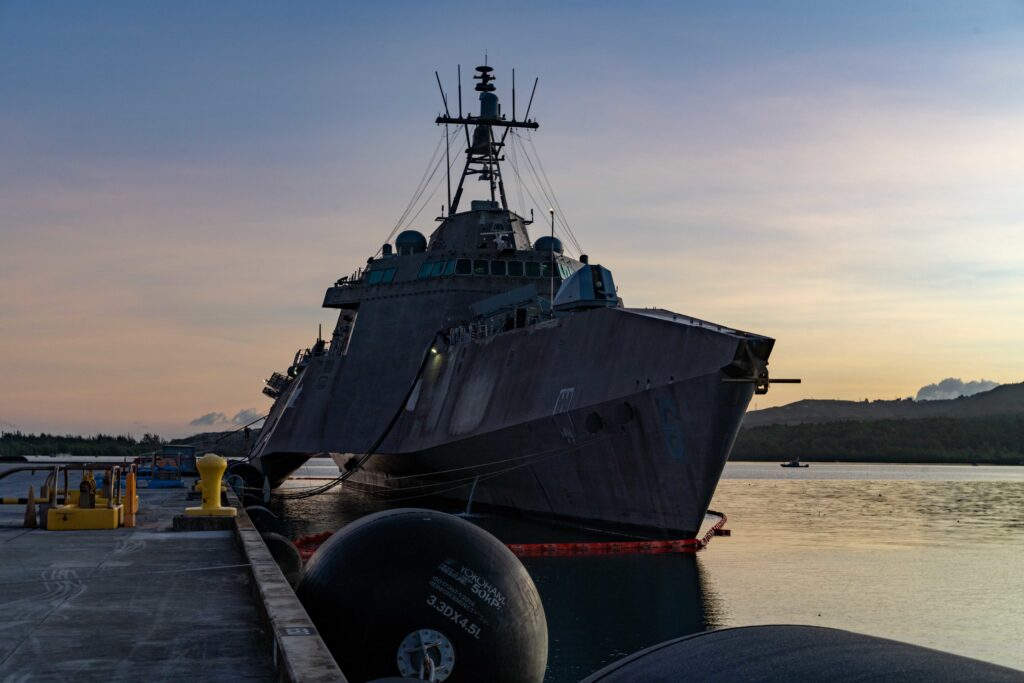
ARLINGTON, Va. — The U.S. Navy’s 2023 budget proposal — including the Future Years Defense Plan — would result in profound changes to the missions, organization, force structure, training and crews of the Navy’s littoral combat ships in addition to the force reduction by decommissioning of many of the ships.
The LCS remaining in service would see a second order of effects that would further show a force dramatically changed from the original vision for the ships. The surface warfare mission and the mine countermeasures mission will be divided by coast instead of mixed on both.
The Freedom-class LCS would be most the most affected by the proposed budget. Including earlier decisions, the Navy would, because of fiscal constraints, decommission LCS 3, 5, 7, 9, 11, 13, 15, 17, and 19 across the FYDP. (LCS 1 was decommissioned in 2021.) Six Freedom-class ships (LCS 21, 23, 25, 27, 29, and 31) would be retained, having been or will be completed with the combining gear improvement installed.
The Independence-class LCS will not be unscathed. The Navy proposes to reduce LCS 6 and 8 to single crews (from dual Blue-Gold crews) in 2023, and then decommission the two ships in 2024. (LCS 2 was decommissioned in 2021, and LCS 4 is scheduled to be decommissioned in 2022.) A total of 15 Independence-class ships would be retained in the fleet.
All LCS assigned the surface warfare mission would be assigned single crews only. Such crews would see their manpower increased by approximately 25 Sailors each to help sustain readiness levels that a second off-hull provided.
Since the antisubmarine warfare mission package is being divested, all LCSs marked for the ASW mission will be shifted to the surface warfare or mine countermeasures mission. Because of the substantial reduction in the number of LCS planned, the ASW mission in small surface combatants will reside solely in the future Constellation-class guided-missile frigate (FFG 62), which the Navy says is a “foundational mission set for the FFG 62 program, which is a more suitable platform and Variable Depth Sonar [VDS] capability will be added to the fleet through the FFG 62 class.”
The Navy is proposing the East Coast littoral combat ships — which are of the Freedom class — be assigned only the surface warfare mission and the West Coast LCS — planned to be only Independence-class ships — be assigned only the mine countermeasure mission. As a result, there would be changes in the LCS command and support organization structure.
Accordingly, the LCS antisubmarine warfare divisions on both coasts would be disestablished in 2023 with the divestiture of the ASW mission. MCM Division 22 on the East Coast and SUW Division 11 on the West Coast also would be disestablished in 2023.
With the overall reduction in LCS ships and their crews, and a force of just 21 LCS planned (15 MCM ships and 6 SUW ships), the training infrastructure required for training would be reduced. The proposal calls for the disestablishment of LCS Training Facility Atlantic, consolidating all LCS training at LCS Training Facility Pacific.
All of these proposals will receive the scrutiny of the congressional armed services and appropriations committees.
If the total LCS changes were to be approved, the Navy estimates the savings to be $391.4 million for fiscal 2023, totaling $2.46 billion over the FYDP.
- Insitu Going Strong at 30, Focusing on Maritime Operations - April 8, 2024
- Navy Awards Boeing Additional Funds for MQ-25 Drones for Testing - April 3, 2024
- Benign 4th Fleet AOR Useful for Unmanned Vehicle Operationalization, Admiral Says - March 27, 2024






